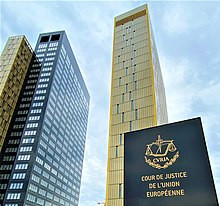
photo: Wikipedia
A recent case brought back to our attention the importance of understanding the reach of protection granted to marks with a reputation in EU law. The trade mark in question here was undoubtedly one of the most famous brands worldwide: Google.
In 2018, Mr. Harbaoui, a French resident, filed trade mark applications for the word sign “Google Car” and the figurative signe “GC: Google Car”, with the GC abbreviations appearing in large above the Google Car words. These trade marks were applied for covering goods in class 12 of the Nice Classification, covering vehicles and associated products.
Unsurprisingly, Google LLC (which people may now know as Alphabet) opposed these applications, based on a series of its “Google” trade marks covering classes 9, 35, 38 and 42. As one would expect, the trade mark examiner rejected the trade mark applications, and the EUIPO’s Board of Appeal agreed. Nevertheless, Mr. Harbaoui decided to appeal the decision, and the matter reached the General Court of the CJEU, who issued its decision earlier this month.
Mr. Harbaoui had argued that while the similarity between the marks could not be questioned, the examiner and the Board of Appeal had failed to demonstrate that there was an actual risk of confusion despite the trade marks covering different products and services. The Court rejected this argument, as difference between products and services covered, while relevant, cannot alon preclude a risk of confusion. The “Google” mark having a global reputation and being omnipresent in the daily lives of and the general public and specialist publics, including the automotive sector, there was no need to into a detailed comparison between the covered goods. Google’s reputation transcends through into all markets.
Furthermore, the trade mark examiner had found that Mr. Harbaoui was seeking to obtain an unfair advantage by using the “Google” brand in order to attract attention. Mr. Harbaoui argued that simply bringing a pre-existing trade mark to mind was not enough to demonstrate such unfair advantage. Again, this argument was rejected by the Court, who stated that the risk of free-riding was obvious. One of the elements of the proposed marks was identical (“Google Car”), and given Google’s strong reputation and the generic nature of the other element in the marks (“Google Car”), attempt to take unfair advantage was therefore easily established.
Finally, the Court stated that despite the visual and conceptual differences between the figurative “GC: Google Car” and the “Google” trade marks, Mr. Harbaoui was not able to demonstrate that ther was not a risk of confusion and that consumer seeing this figurative trade mark would not link it with the Google brand.
This decision serves as a good remined of the reach of the protection granted to trade marks with a reputation, which transcends into classes of goods and services not originally covered in the trade mark registration, and which can outweigh almost any visual and conceptual differences when dealing with figurative trade marks.
Amendments to the Madrid Agreement concerning the international registration of trade marks
At its fifty-fifth (24th ordinary) session, the Madrid Union Assembly adopted amendments to Rules 9, 15, 17 and 32 of the Regulations Under the Protocol Relating to the Madrid Agreement Concerning the International Registration of Marks (hereinafter “Regulations”) and to item 2.1 of the Schedule of Fees that will enter into force on February 1, 2023. These amendments have practical consequences regarding the requirements for the filing international trade mark applications.
Colour as a distinctive mark
Applicants henceforth will need to present solely one representation of the mark when claiming colour as a distinctive mark doing away with earlier rule of providing two representations that is, one in black and white and another representation in colour. As of February 1, 2023 only colour representation of the mark would be required under Rules 9(4)(a)(v),(vii), 32(1)(c) of the Regulations.
Claim of colour as a distinctive feature.
Colour can be claimed as distinctive feature even when colour does not appear in the basic mark and the representation of the basic mark is not in colour. Rules 9(4)(a)(vii) of the Regulations allows for colour claim of the basic mark on being certified by the office of origin.
New means of representing marks
The current requirement of reproduction of the mark fit the box provided in the international application has been amended and the new section on administrative instructions provides couple of options to provide representation of the mark. Firstly, by providing a visual representation of the mark not exceeding 20 cm in length or width. Secondly, by providing a single digital file (JPEG, PNG or TIFF format; a sound recording in WAV or MP3 not exceeding 5 MB or a motion or multimedia recording mp4 format not exceeding 20 MB in size).
Representation of the mark in a notification of provisional refusal
In cases of provisional refusal based on earlier marks, links to online database or generally accessible publication would suffice and national offices do not have to provide a representation of the earlier mark in the notification.
Electronic exchange of communications with the International Bureau of WIPO
Minimizing physical communication, any requests or communication to WIPO are solely be sent through Contact Madrid online platform or by using the e-Madrid online service.